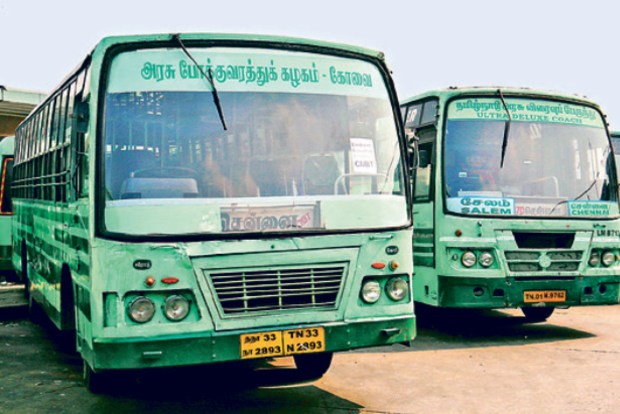Begin typing your search...
Editorial: Put public transit into top gear
One of the city’s lifelines, the Chennai Metropolitan Transportation Corporation (MTC) is all set to ring in its Golden Jubilee next year in January.

Chennai
And in the run-up to it, a group of hobbyists from the city has come together to commemorate the occasion with year-long programmes honouring the men and women who keep the network of bus routes alive. The celebrations might be a bit muted though, considering the patronage enjoyed by MTC buses has significantly dipped over the past few decades.
With a fleet strength of as many as 3,679 buses, MTC is the nation’s second-largest operator of urban bus services, with the capacity to transport over 35 lakh passengers on a daily basis. However, over a period of 30 years, its patronage has dipped to 22 per cent from 39 per cent in its heydays. This has been attributed to the shift of commuters to private vehicles, which in turn has contributed to a significant rise in traffic congestion in the metro as well an increase in emission levels, and the number of road accidents. Lack of funding to meet operational costs as well as maintaining low fares to keep the service affordable have contributed to MTC’s depleting service levels. It’s a pain point faced by other major cities as well, who for the lack of a better word, have often relegated user-friendly public transport to an afterthought.
As per a 2017 report ‘Reimagining public transport in India’, the nation is 30 pc urbanised and as much as 66 pc of the GDP comes from the cities. By 2030, urbanisation is expected to touch 40 pc, and urban contribution to GDP is also set to rise to 75 per cent. Unfortunately, the public transport infrastructure is significantly under-equipped to handle a population of 1.3 bn. The nation’s estimated 88 mn trips (comprising 70 mn by buses, 18 mn by railways, and 0.23 mn by air) are made using public transport on a daily basis. But, this translates to just about 6-9 per cent of total trips being undertaken via public transport in India, as against 30-35 pc in other countries across the world. The patronage of public transport systems in India also took a massive hit, owing to the pandemic, during which most economically privileged individuals opted to use their own modes of commute, instead of taking public transport.
So, what can India do to turn around the fortunes of its public transport infrastructure? For starters, the government must tackle a few immediate challenges head-on. Issues such as institutional gaps, inadequate supply, poor customer experience, and the lack of use of technology lie at the heart of diminished reliance on public transport. As of now, about 1.5 lakh government-run buses undertake the aforementioned 70 mn trips per day in India. Going forth, an additional 4.6 lakh buses will be needed to serve urban India, along with other modes of public transport by 2031. Opting for private partnerships could be one of the ways State Road Transport Undertakings can cut down on costs, boost revenues. The advent of work from home also came across as one unexpected solution to India’s never-ending traffic woes, rendering the idea of office commute null.
Here in Chennai, the Comprehensive Mobility Plan envisions achieving 57 per cent mode share for public transport trips by 2048. This includes city buses, as well as metro and suburban rail services. Encouragingly, the MTC drafted a Request for Proposal (RFP) in August 2020, to hire a business consultant and help streamline its operations, improve its services, and suggest alternative ways of funding. As many as 500 buses have been equipped with GPS-based speakers for stop announcements. The MTC has also revamped its portal to offer commuters a clear understanding of bus routes. Increased investments in improving public transport infrastructure will play a key role in improving India’s economic health. And the faster we do it, the better.
Visit news.dtnext.in to explore our interactive epaper!
Download the DT Next app for more exciting features!
Click here for iOS
Click here for Android
Next Story



